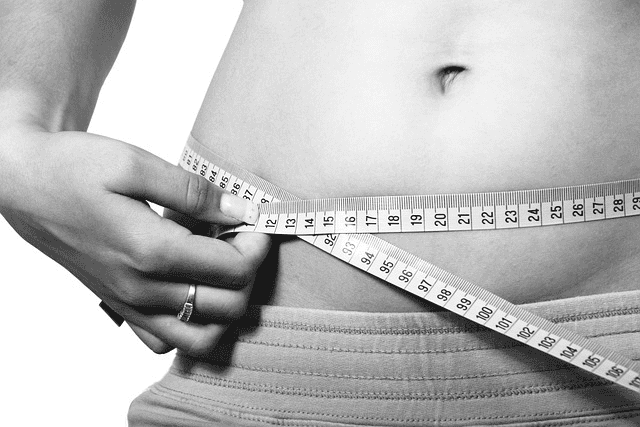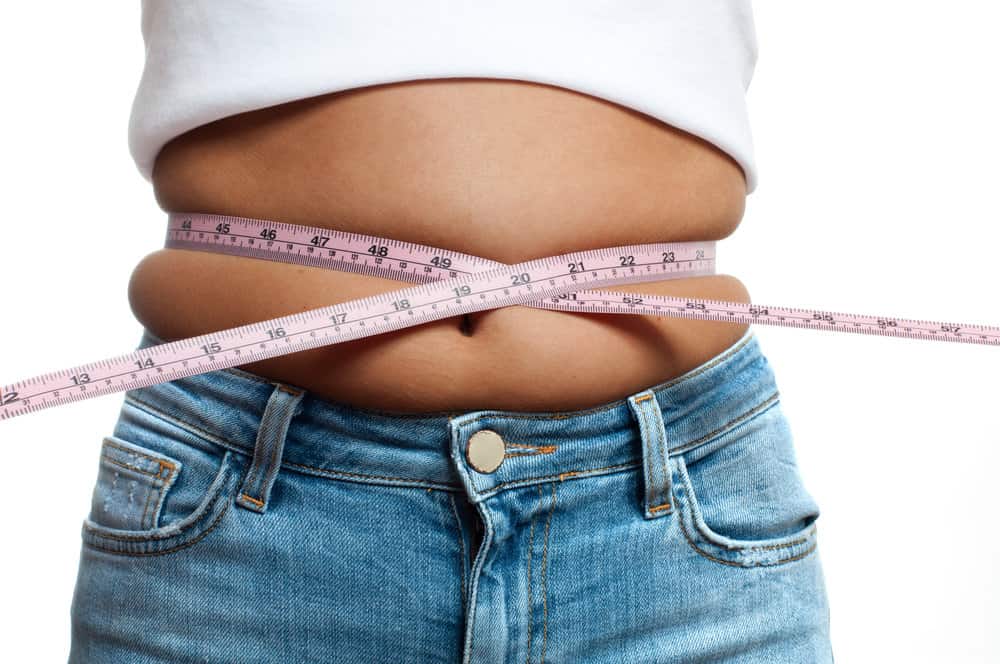Are you struggling to lose that stubborn belly fat? Intermittent fasting has gained popularity as a powerful tool for weight loss, but did you know that it can also help you lose belly fat? The key to success lies in finding the answer to “what is the best intermittent fasting window to lose belly fat?” that works for your individual needs and lifestyle. Keep reading to learn how to choose the right fasting window, explore popular intermittent fasting methods, and discover tips to maximize belly fat loss.
Short Summary
-
Discover the perfect fasting window to maximize belly fat loss and achieve your health goals.
-
Personalize your plan for success with lifestyle, daily routine, diet, and more.
-
Maximize results by prioritizing nutrient dense foods, staying hydrated & exercising regularly while managing stress & sleep.
The Importance of Choosing the Right Fasting Window

Selecting the perfect fasting window is essential for successful belly fat loss and overall weight loss, as it impacts nutrient metabolism and hormonal balance, making it a key factor in your success. The time of day the fasting window takes place is an essential factor to consider when selecting the ideal fasting window to lose belly fat.
Moreover, having excess stubborn belly fat can lead to potential health risks like heart disease and type 2 diabetes, which could seriously affect your overall health. So, how can you maximize your belly fat loss with intermittent fasting? Focus on nutrient-dense foods, stay hydrated, get active, and take care of your stress and sleep.
Personalization Is Key
Personalizing your fasting window to your individual needs and preferences is critical for achieving long-term success in losing belly fat. When customizing your fasting window, it is important to consider your lifestyle, health objectives, and overall health condition to maximize the effectiveness of intermittent fasting for losing belly fat.
Prioritizing nutrient-dense foods, staying hydrated, incorporating exercise, and managing stress and sleep are all great tips for maximizing belly fat loss with the best intermittent fasting window for you. Additionally, exploring different fasting windows through trial and error or consulting a healthcare professional can help you discover the ideal fasting window for belly fat reduction.
Factors to Consider
When making an informed decision about your fasting window, factors such as lifestyle, daily routine, and health conditions should be carefully considered, along with maintaining a healthy diet. Your work schedule, sleep patterns, and stress levels can all play a role in determining the fasting window that works best for you when using belly fat intermittent fasting.
Daily routine can be a great guide to determining the best fasting window for you, taking into account your meal timing, exercise habits, and social activities. To get the most out of intermittent fasting, make sure to focus on nutrient-dense foods, stay hydrated, add in exercise, and manage stress and sleep.
Experimenting and observing the results may be the best way to find your ideal fasting window, or you can always consult a healthcare professional for guidance.
Popular Intermittent Fasting Methods and Their Impact on Belly Fat

Intermittent fasting can be beneficial in reducing belly fat. Some of the different types include the 16/8 method, 5:2 diet plan, alternate-day fasting and Warrior Diet. However, the effectiveness varies depending on individual factors. It is absolutely essential for achieving lasting success to remain consistent when selecting an intermittent fasting approach.
The Eat-Stop-Eat method involves 24-hour fasting twice a week, offering the potential to reduce calorie intake and potentially lead to fat loss. However, the prolonged fasting period may be challenging for some individuals and may cause them to binge or overeat later, leading to unhealthy eating patterns.
The 16/8 Method
The 16/8 method is an approach to time restricted eating. This involves fasting for 16 hours and consuming all your daily calories in 8 hours. During the fasting phase, you can sip on calorie-free drinks like water, tea, and coffee to keep you energized and motivated. Staying away from snacks and junk food during the 8-hour window can help you maximize the benefits of 16/8 intermittent fasting.
By combining this method with a balanced diet and regular exercise, you can potentially enjoy weight loss, improved metabolic health, and an array of other health benefits, all while maintaining a healthy body weight.
The 5:2 Diet Plan
The 5:2 diet plan is an effective way to achieve your health goals, as it involves eating normally for five days and restricting calories to 500-600 for two non-consecutive days. The 5:2 diet has been proven to be just as effective as daily calorie restriction for weight loss and blood glucose control for people with type 2 diabetes. According to a 2018 study, this diet can be a successful way to manage diabetes in the long term.
The 5:2 diet plan gives you abundant flexibility. You are free to choose which days you fast. Besides, on full-calorie days, there are no restrictions on what or when to eat. To determine if the 5:2 diet plan could work for you, consult your doctor and see if it could be a great fit.
Alternate-Day Fasting
Alternate-day fasting is an intermittent fasting plan where you can enjoy whatever you want on non-fasting days and fast every other day to achieve your desired results. Maintaining a nutritious diet with high protein foods and low calorie vegetables can help you feel full and energized during alternate-day fasting. The alternating nature of fasting and eating can provide an exciting opportunity to challenge yourself and stay motivated.
A pilot study was conducted to compare the effectiveness of alternate-day fasting and daily caloric restriction for weight loss in adults with obesity. The results showed that both methods were equally effective in creating a calorie deficit and consuming fewer calories. A modified fasting plan for alternate-day fasting, involving eating around 500 calories on fasting days, can help you reap the rewards.
The Warrior Diet
The Warrior Diet is based on the concept of a daily 20-hour fast followed by a 4-hour evening meal, mimicking ancient warriors’ eating habits and promoting weight loss. The extended fasting period can be challenging to manage, but with consistency and dedication, you can enjoy great weight loss and health benefits.
During the 20-hour fast period, you should ensure to nourish your body. Choose small portions of nutritious foods and drinks like dairy products, hard-boiled eggs, raw fruits and vegetables and non-calorie fluids. Opt for unprocessed, healthy, and organic foods during the 4-hour eating window to maximize the benefits of the Warrior Diet.
Hormonal and Metabolic Effects of Intermittent Fasting on Belly Fat

Intermittent fasting can help you reach your goals by promoting hormonal changes that facilitate fat burning. These hormonal changes, such as improved insulin sensitivity and increased norepinephrine release, play a crucial role in reducing belly fat and achieving overall weight and fat loss goals.
By following an intermittent fasting plan, you can take advantage of these hormonal changes to reach your goals.
Insulin Sensitivity
Improved insulin sensitivity is a measure of how well your cells can take up glucose from the blood. Maximizing your cells’ responsiveness to insulin can help you better manage your blood sugar levels and promote fat burning during fasting periods.
Insulin levels decrease significantly when fasting, which allows the body to access stored fat reserves, including visceral fat, for energy, decreasing belly fat gradually.
Norepinephrine Release

Norepinephrine release is an exciting process that refers to the release of the hormone norepinephrine (also known as noradrenaline) in the body. It is released during states of stress or anxiety and helps the body respond to stress and exercise in a positive way.
Increased norepinephrine release during intermittent fasting encourages the breakdown of stored fat, helping you to lose belly fat.
Tips for Maximizing Belly Fat Loss with Intermittent Fasting
To maximize your belly fat loss with intermittent fasting, focus on eating nutrient-dense foods, stay hydrated, incorporate exercise into your routine, and make sure to manage stress and get enough sleep. Strength training is an excellent way to preserve lean muscle during intermittent fasting. Regular exercise can help you speed up the process and reach your goals faster.
Avoiding overeating during the eating window and focusing on achieving overall weight and fat loss goals, rather than focusing on reducing fat in specific regions, is important for sustainable weight loss.
Prioritize Nutrient-Dense Foods
Nutrient-dense foods are packed with essential nutrients, such as vitamins, minerals, and antioxidants, while being surprisingly low in calories. Adding nutrient-dense foods like fruits, vegetables, lean meats, fish, whole grains, and dairy products to your diet can be highly beneficial.
Prioritizing nutrient-dense foods is beneficial because they provide essential nutrients that are necessary for maintaining optimal health and achieving weight loss goals.
Stay Hydrated

Drinking water during fasting periods can help you stay satiated, rev up your metabolism, and support your digestive system. Staying hydrated can have some amazing benefits! It can support physical performance, prevent headaches and constipation, improve sleep quality, cognition, and mood, aid in digestion and nutrient absorption, and regulate body temperature.
Rest assured, your fast will remain intact when you drink water during the fasting period.
Incorporate Exercise

Incorporating exercise into an intermittent fasting plan can offer a range of advantages, such as increased fat burning, improved insulin resistance, stimulation of growth hormones, hormone optimization for overall health benefits, a potential decrease in the risk of diabetes and lower blood pressure, and maintenance of muscle mass. Aerobic exercises such as running, cycling, swimming, and walking, along with resistance training like weightlifting and bodyweight exercises, can help you get the most out of your intermittent fasting.
To get the most out of your exercise while intermittent fasting, it is essential to stay hydrated, focus on nutrient-dense foods, and take care of your stress and sleep.
Manage Stress and Sleep
By managing stress and getting enough sleep, you can reap several rewards, such as reduced anxiety, better emotional regulation, improved physical health, lower levels of stress-related disorders, and enhanced mental well-being. To manage stress and prioritize quality sleep, you can try relaxation techniques like deep breathing, yoga, and meditation.
Additionally, cutting back on caffeine and alcohol, exercising regularly, and ensuring you get enough sleep can help you achieve a healthier lifestyle.
Finding Your Ideal Fasting Window
Finding your ideal fasting window can be a great opportunity to experiment and learn about your body. Don’t forget to consult a healthcare professional for guidance. Through trial and error, you can unlock the fasting window that works best for you, paying attention to how you feel and how your body responds to different fasting windows.
Give it a try and see the amazing results for yourself!
Trial and Error
Exploring different fasting windows can be incredibly beneficial. It’s a great way to figure out what works best for your body and lifestyle, plus it can help you recognize your hunger cues and eating patterns.
You can also track your weight, body fat percentage, and other health markers to determine which fasting window works best for you. Patience can be a great asset when adapting to an intermittent fasting protocol, as it allows the body to adjust and optimize its metabolic flexibility, getting used to the fasting and eating cycles.
Consult a Healthcare Professional

Consulting a healthcare professional before starting intermittent fasting can ensure it is safe and tailored to your individual needs, making it a great choice for you. When consulting a healthcare professional, you should make sure to provide them with all the necessary information about your health history, lifestyle, and goals to ensure you get the best advice. Don’t forget to ask any questions you may have about intermittent fasting.
It is best to consult a healthcare professional if you have any existing health conditions, are pregnant or breastfeeding, or are taking any medications.
Summary
Finding the best intermittent fasting window to lose belly fat is a personal journey that requires experimenting with different methods and considering various factors. By prioritizing nutrient-dense foods, staying hydrated, incorporating exercise, and managing stress and sleep, you can maximize your belly fat loss and achieve sustainable weight loss. Don’t hesitate to consult a healthcare professional for guidance, and remember that patience, consistency, and dedication are key to success.
Frequently Asked Questions
What times should I intermittent fast for belly fat?
Try the 16/8 approach by fasting for 16 hours and eating meals within an 8-hour window, or try the 5:2 approach with regular eating on five days and limiting calories to 500-600 calories on two non-consecutive fasting days. Give either of these methods a try and see how it works for you!
How long does it take to lose belly fat by intermittent fasting?
Intermittent fasting has been proven to be an effective method for weight loss and belly fat reduction, with the average individual seeing up to 8% body weight loss in as little as 3-24 weeks.
This type of fasting involves alternating periods of eating and fasting, usually over 16-24 hours. During the fasting period, individuals are encouraged to drink plenty of water and consume low-calorie beverages such as tea and coffee. This helps to reduce hunger and cravings, while also helping to reduce hunger.
Which intermittent fasting burns the most fat?
Fasting for 10–16 hours a day combined with endurance exercise appears to be the most effective approach for burning fat. This type of intermittent fasting plan may be intense, but it can help you get the best results.
How much weight can you lose by fasting?
You can lose up to 11 pounds in 10 weeks with intermittent fasting – an effective and sustainable way to achieve your weight loss goals.
Intermittent fasting is a great way to lose weight quickly and safely. It involves alternating periods of eating and fasting, allowing your body to burn fat and lose weight. It also helps to reduce cravings.
What are some popular intermittent fasting methods to try?
For those looking to try intermittent fasting, some popular methods include the 16/8 method, the 5:2 diet plan, alternate-day fasting, and the Warrior Diet.
